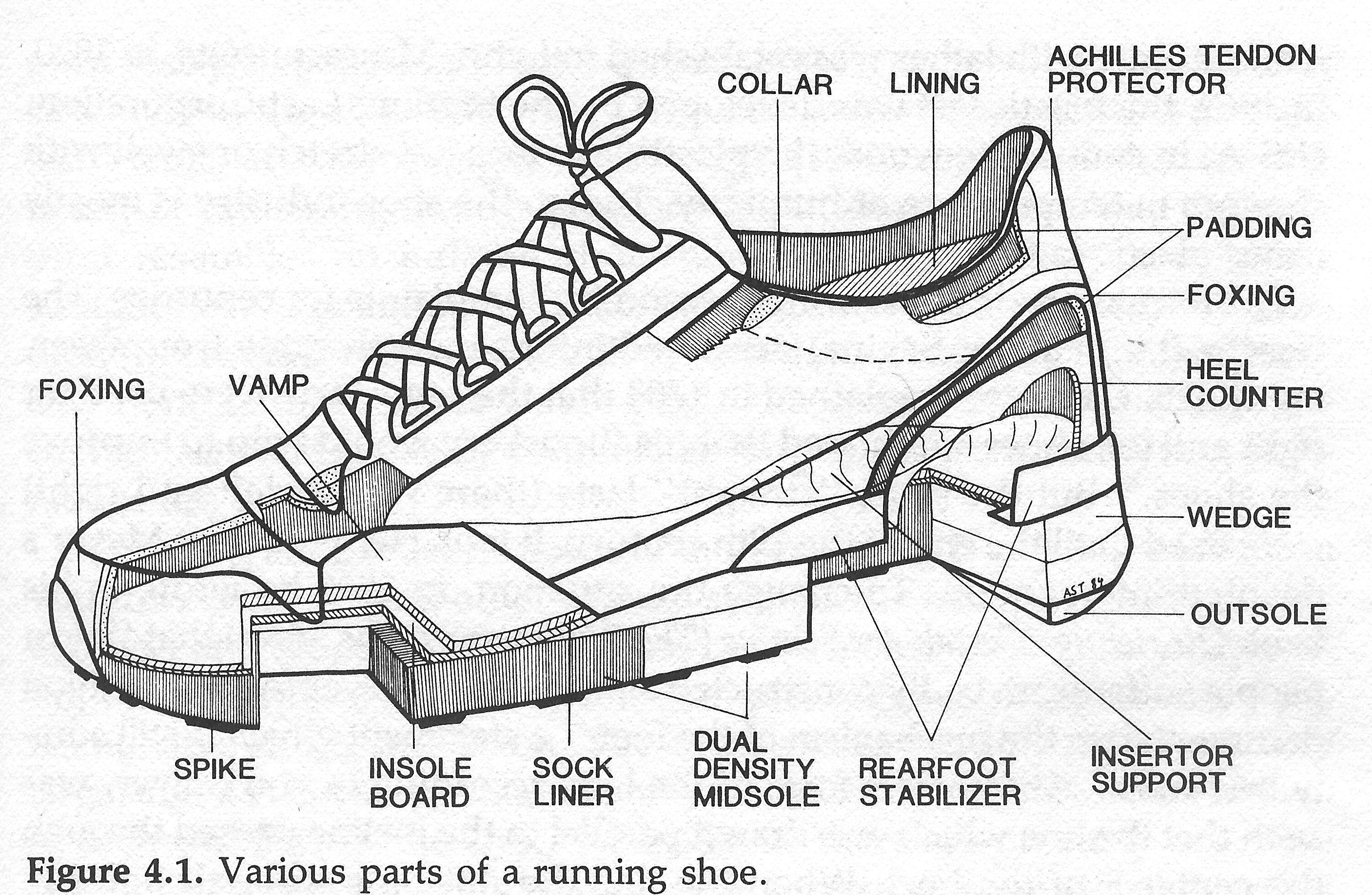
Anatomy of a Shoe
Various parts of the running shoe help cushion, create friction, and stabilize the foot.
Vamp/Upper: This holds the foot in place and is breathable to
keep the
feet cool. The collar cushions the ankle and the tongue cushions
against the
pressure of the laces.
Insole Board/Midsole: This is important in the shoe as this part
provides cushioning against the impact force from the ground. The
insole board
consists of three parts:
EVA (ethylene
vinyl
acetate): Lightweight, foam-based cushioning.
Dual-Density EVA: When you double the density of
something it gets stronger, firmer and heavier (twice the mass in
the same
amount of space). The dual-density EVA
is called a
"medial post". 'Medial' because it is on the inside of the shoe
and 'post' because it has a beginning and an end. The length of the
post
determines the amount of
control.
Polyurethane (polyurethane): Very durable cushioning. More
durable/stable than EVA and weighs more than EVA.
Outsole: Has tread for traction, flex grooves for flexibility
and
protects from dirt/rocks. The outsole is made of two materials:
Carbon Rubber: The most durable (same material as tires).
Blown
Rubber: Lighter, more flexible and more cushioned, but not
as durable.
Achilles Tendon Protector/Heel counter: This piece keeps the heel in line and provides stability.
Wedge: This adds height to the running shoe to absorb shock. Shoes with higher heels are less stable.
Last: This is what the entire shoe is built around. The three types of lasts are straight, semi-curved, and curved.

http://www.muscle-injury.co.uk/orthotics2.jpg, 21 Apr. 2009.
| Home |
Anatomy |
Friction |
Cushioning |
Pronation |
Bibliography |